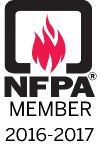Facility Managers get what they pay for
Facility Managers get what they pay for when it comes to business continuity and service reliability
If a facility manager has not implemented plans for business continuity and service reliability they are just waiting for a catastrophe to happen.
Business continuity and service reliability goals for every company should be to stay effective and operational 24/7. However, wanting something to happen and reality are two different things.
Plans should be made and implemented for every business for the possibility of 100% downtime, partial downtime and other unknown disasters. These plans can only be made by a group of knowledgeable personnel that fully understand every company process and the equipment, personnel and other resources involved to maintain 24/7 business continuity and service reliability.
Some facility managers choose to have no plan in place for business continuity and service reliability. Some facility managers do not even have a disaster recovery plan. The end results when outages occur are that everyone reacts to his or her needs with no regard to find, locate or fix the root cause of failure. Their goal is to get back on line as fast as possible and in many cases with no regard to cost.
At a minimum, the facility manager’s team should be familiar with the following documents. Unfortunately, most facility managers are not familiar with most of these documents.
- NFPA 70 National Electrical Code
- 70 B Electrical Equipment Maintenance
- 70E Electrical Safety in the Workplace
- NFPA 77 Recommended Practice on Static Electricity
- NFPA 110 Standard for Emergency and Standby Power Systems
- IEEE 3000 Standard: Fundamentals
- IEEE 3001 Standards: Power Systems Design
- IEEE 3002 Standards: Power Systems Analysis
- IEEE 3003 Standards: Power Systems Grounding
- IEEE 3004 Standards: Protection & Coordination
- IEEE 3005 Standards: Energy & Standby Power Systems
- IEEE 3006 Standards: Power Systems Reliability
- IEEE 3007 Standards: Maintenance, Operations & Safety
The facility manager’s team must first establish a cost per minute, hour, and day for any or all processes that can go off line. The cost should include labor, overhead, and any resource required to maintain that process while on line. They should not forget any overtime that may be required to get production back on schedule. The team must create a method to log and capture all downtime cost, length, and root cause of the downtime.
The team must establish a network of personnel responsible to not only repair the problem but also a chain of command to authorize and source all external services needed to fix the root cause of the downtime.
This team may not prevent every minute of downtime that will occur but it will be able to discuss the cost and efforts of everyone involved to help reduce the cost or eliminate that type of downtime in the future.
For those facility managers who choose not to implement a team to track and reduce downtime I suggest you keep your resume up to date.
Over a period of ten (10) years it is not uncommon for downtime to average between two percent (2%) to eight percent (8%) or greater of available work time a year.
Some facility managers might call these losses a cost of doing business. However, when root causes of failures are known and preventive measures are in place the percentage of downtime will decrease. Facility managers should have a goal of less than one percent (1%) of downtime a year.
« Back to Blog






Comments